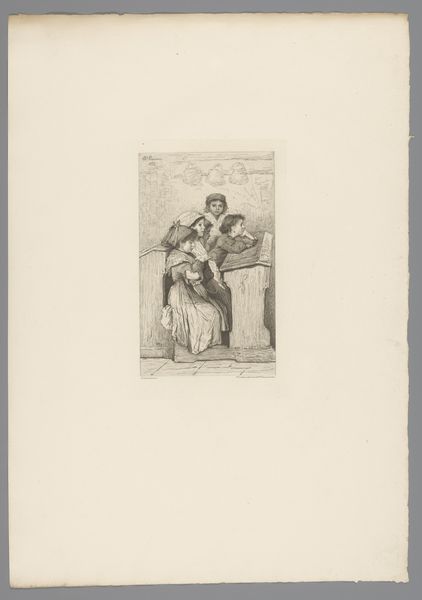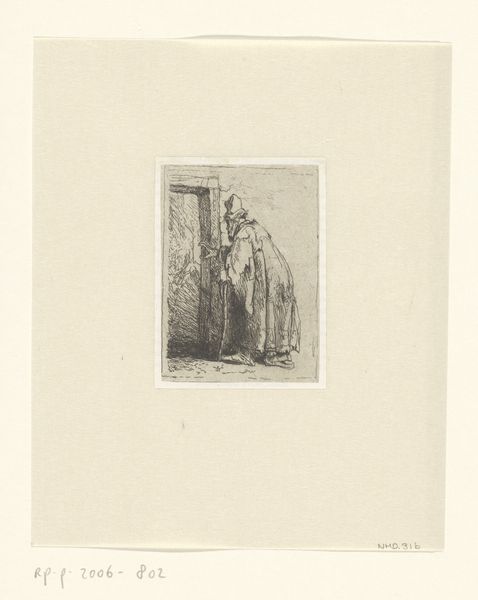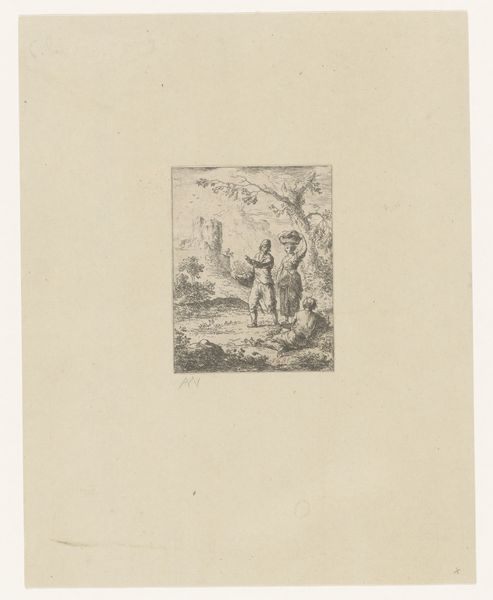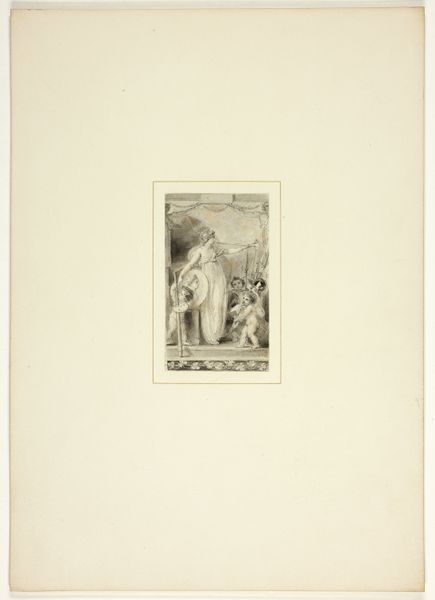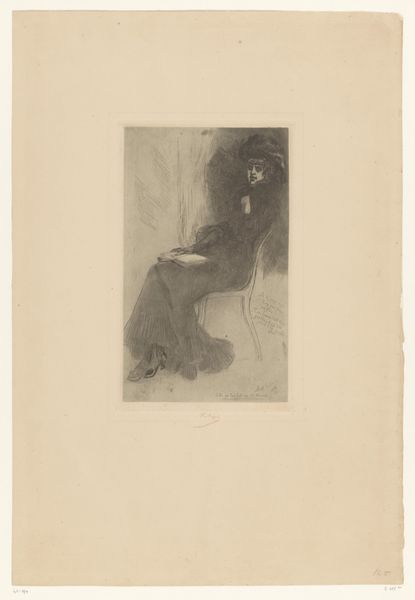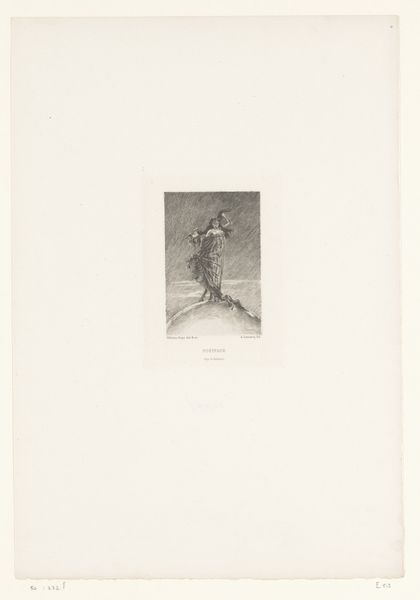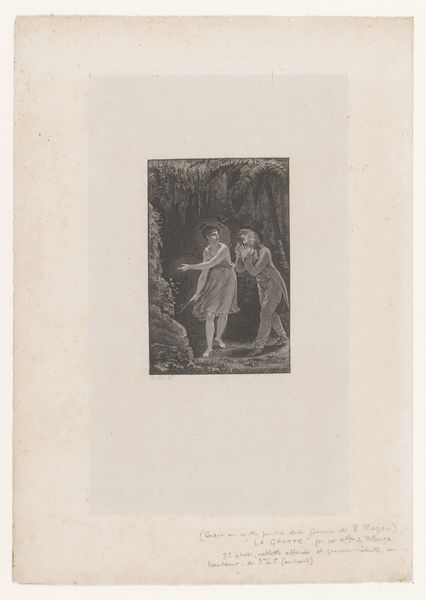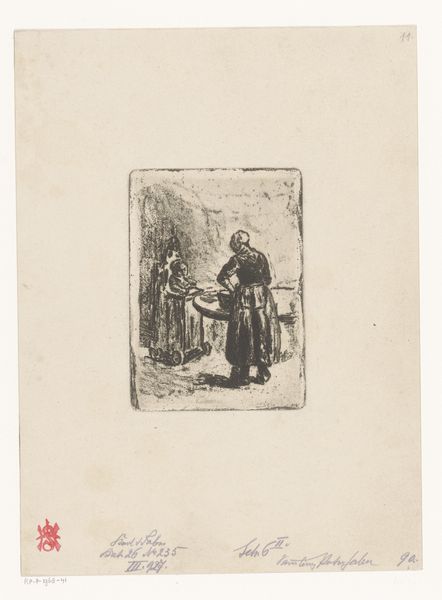
print, etching
portrait
mother
etching
figuration
symbolism
Dimensions: height 252 mm, width 114 mm
Copyright: Rijks Museum: Open Domain
Curator: Looking at this print, I’m struck by a somber kind of beauty; the mood feels quite heavy and introverted. What are your initial impressions? Editor: It’s called *Woman with Child in Arms*. It’s an etching, so the labor involved, biting the plate with acid, makes me think about craft production, especially as distinguished from the industrial production gaining traction during the time it was made, back in 1879, by Félicien Rops. Curator: The image certainly has a dreamlike quality, and I imagine Rops using the etching medium quite deliberately, allowing the symbolic weight to be palpable; look at the loose lines suggesting rather than defining the subjects—it mirrors how memory itself can be vague. What is the symbolism hinting at? Editor: Absolutely, Rops seems deeply invested in representing mother-child relationships—we can infer his intention through his technical processes and symbolic choices here. But let’s note this is not merely the emotional portrayal we see. Etching allows for multiplication and mass distribution. Here is a reproductive technology disseminating symbolic depictions of motherhood to a consumer public. Curator: Good point! The dark lines against the pale paper heighten that air of quiet reflection or maybe even…resignation? It brings up complicated, unresolved emotions, that interplay between tenderness and what I would interpret as almost burden—motherhood, perhaps idealized, is presented here with underlying shades of melancholy. Editor: Right, the choice of etching also brings a different set of questions on representation into play: here the figure stands amidst foliage with symbolic import of the pastoral and its value as natural labor. Rops’s strategic choice to depict such loaded figures raises broader questions about class identity, labor, and consumption. Curator: In its understated way, there is something genuinely stirring in its simple composition. So I do wonder, what does that medium contribute to its broader significance as more than just a simple portrait of motherhood? Editor: It points towards labor and the business of symbolic construction through reproductive technologies. In sum, I think we are speaking of how these lines work and speak. I’m struck at how even the seemingly lightest traces are material interventions shaping what it means to mother.
Comments
No comments
Be the first to comment and join the conversation on the ultimate creative platform.

